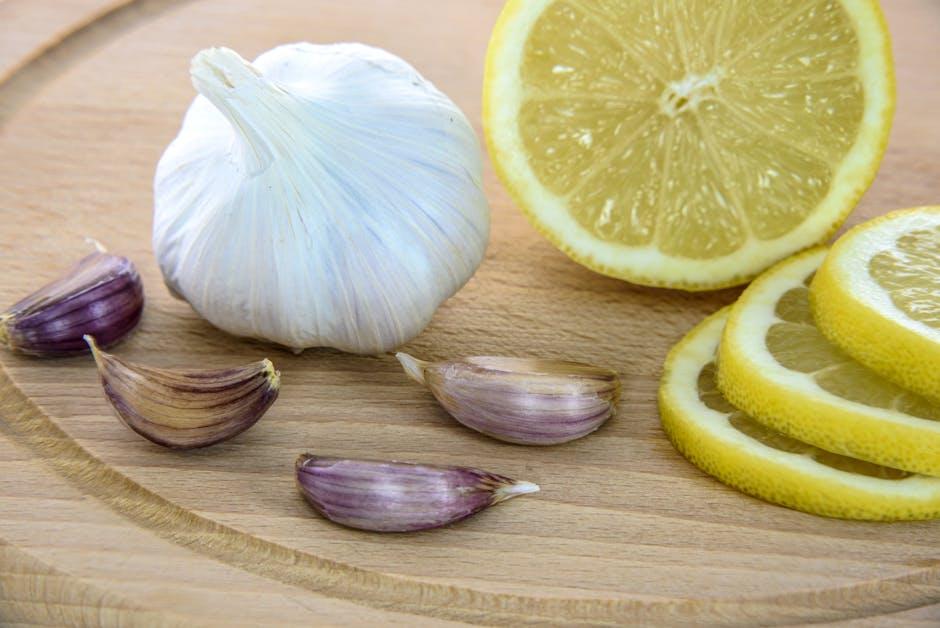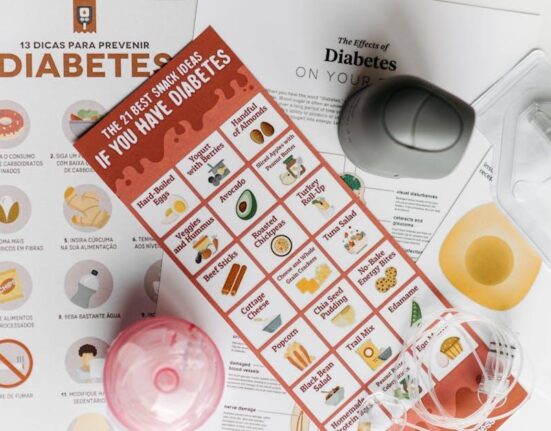In a world where digestive health is increasingly recognized as a cornerstone of overall well-being, the GAPS diet has emerged as a promising nutritional approach that goes beyond mere sustenance. Rooted in the principles of gut healing and restorative nourishment, the GAPS (Gut and Psychology Syndrome) diet offers a pathway to mend the intricate ecosystem within our digestive tract. This article delves into the healing benefits of the GAPS diet, exploring how its carefully curated foods and healing protocols can support digestion, reduce inflammation, and potentially alleviate a range of physical and mental health challenges. Whether driven by curiosity or a quest for holistic health, understanding the GAPS diet unveils a compelling story of how what we eat can profoundly influence how we heal.
Table of Contents
- Understanding the Core Principles of the GAPS Diet
- How Gut Health Influences Overall Wellbeing on the GAPS Diet
- Key Nutrients and Foods that Support Healing
- Practical Tips for Transitioning Smoothly to the GAPS Lifestyle
- Monitoring Progress and Adjusting the Diet for Long-Term Success
- Q&A
- Future Outlook

Understanding the Core Principles of the GAPS Diet
The foundation of the GAPS Diet revolves around restoring a healthy digestive system by eliminating harmful substances and nurturing beneficial bacteria within the gut. It is based on the premise that many chronic health issues stem from imbalances in gut flora and a compromised intestinal lining. To achieve this, the diet emphasizes the consumption of nutrient-dense, easily digestible foods such as fermented vegetables, bone broths, and homemade yogurt. These foods are carefully chosen for their ability to heal the gut lining, reduce inflammation, and promote the growth of beneficial microbes.
Crucial to this approach are a few guiding principles that help ensure the diet’s success:
- Elimination of processed and inflammatory foods: This ensures the gut is not further irritated or damaged.
- Focus on gut-healing nutrients: Bone broth provides collagen and amino acids essential for tissue repair.
- Incorporation of probiotics and fermented foods: These replenish and balance the gut microbiome.
- Gradual food reintroduction: To monitor tolerance and prevent relapse.
| Core Principle | Purpose | Example Foods |
|---|---|---|
| Remove Toxins | Reduce gut irritation | No processed sugar, grains, or additives |
| Nutrients & Healing | Support mucosal repair | Bone broth, organ meats |
| Microbiome Balance | Populate beneficial bacteria | Fermented vegetables, natural yogurt |
| Stepwise Transition | Ensure food tolerance | Gradual reintroduction after healing |

How Gut Health Influences Overall Wellbeing on the GAPS Diet
The intricate relationship between gut health and overall wellbeing cannot be overstated, especially when following the GAPS Diet. This nutritional approach emphasizes restoring the gut lining, reducing inflammation, and balancing the microbiome. By nurturing the digestive system through targeted foods such as fermented vegetables, bone broths, and nutrient-dense fats, the body is better equipped to absorb vital nutrients, which in turn supports mental clarity, immune strength, and emotional balance.
Key effects of improved gut health with the GAPS Diet include:
- Enhanced nutrient assimilation leading to increased energy levels
- Reduction in systemic inflammation contributing to chronic disease prevention
- Improved communication between the gut and brain, stabilizing mood and cognitive function
- Strengthened gut barrier to prevent harmful pathogens from entering the bloodstream
| Benefit | Mechanism | Outcome |
|---|---|---|
| Reduced Inflammation | Healing gut lining | Lower chronic disease risk |
| Balanced Microbiome | Increased probiotics from fermented foods | Improved immunity & digestion |
| Enhanced Brain Function | Gut-brain axis communication | Better mood & mental clarity |

Key Nutrients and Foods that Support Healing
The GAPS diet champions several nutrient-dense foods that naturally fortify the body’s ability to heal. At the heart of this nutritional approach are homemade broths and stocks, bursting with gelatin, collagen, and minerals that soothe the gut lining and promote tissue repair. Fermented foods like sauerkraut, kefir, and yogurt introduce beneficial probiotics that balance gut flora, strengthening the immune system and enhancing nutrient absorption. These elements create a powerhouse synergy that supports the recovery of the digestive tract and overall wellness.
In addition to broths and fermented foods, the diet emphasizes the importance of specific healing nutrients:
- Healthy fats: Such as omega-3-rich fish, ghee, and coconut oil to reduce inflammation and provide sustained energy.
- Vitamin A: Found in liver and egg yolks, crucial for mucosal repair and immune function.
- Glutamine: Present in bone broth and certain vegetables, fueling intestinal cells.
- Minerals: Magnesium, zinc, and potassium available in fresh veggies support enzymatic reactions vital for healing.
| Key Nutrient | Healing Role | Common GAPS Foods |
|---|---|---|
| Collagen | Repairs gut lining | Bone broth, gelatin |
| Probiotics | Balances gut flora | Fermented vegetables, kefir |
| Omega-3 Fatty Acids | Reduces inflammation | Wild fish, cod liver oil |
| Vitamin A | Supports immunity | Liver, egg yolks |

Practical Tips for Transitioning Smoothly to the GAPS Lifestyle
Embracing the GAPS lifestyle can feel overwhelming at first, but breaking it down into manageable steps can ease your transition significantly. Start by gradually removing processed foods and introducing nutrient-dense, homemade broths and fermented vegetables into your meals. This not only soothes your digestive system but also boosts gut flora. Remember to listen to your body’s signals and customize the diet phases according to your tolerance levels. Keeping a journal to track symptoms and reactions can be invaluable during this journey.
Creating a supportive environment is just as crucial for success. Surround yourself with resources such as GAPS-friendly recipes, community forums, and trusted health practitioners. Focus on nutrient diversity by incorporating bone broth, organic meats, fresh vegetables, and probiotics in your daily routine. Here’s a quick reference table for key GAPS-friendly food groups to keep handy:
| Food Group | Examples | Benefits |
|---|---|---|
| Soups & Broths | Chicken broth, Beef bone broth | Gut healing, nutrient-rich |
| Fermented Foods | Sauerkraut, Kefir | Restores gut flora, aids digestion |
| Organic Meats | Grass-fed beef, Pasture-raised chicken | High-quality protein, healthy fats |
| Fresh Vegetables | Spinach, Zucchini, Carrots | Rich in vitamins & fiber |
- Prep meals in advance to reduce stress and increase consistency
- Stay hydrated with herbal teas and water infused with lemon or ginger
- Practice mindful eating to better tune into your body’s needs

Monitoring Progress and Adjusting the Diet for Long-Term Success
Achieving lasting wellness through the GAPS Diet requires consistent evaluation of your body’s response and flexible adaptation of your nutritional approach. Keeping a detailed food and symptom journal can unveil patterns that highlight which foods promote healing and which may cause setbacks. Regularly checking in on digestive comfort, energy levels, and mental clarity ensures you remain in tune with your body’s evolving needs. This ongoing process prevents stagnation, enabling you to embrace the next phase of gut restoration with confidence and insight.
As you progress, small strategic adjustments can profoundly shape your healing journey. Consider incorporating the following practices to enhance your long-term success:
- Gradual reintroduction of fermented foods and diverse vegetables to rebuild gut flora diversity.
- Periodic evaluation of food sensitivities to refine your dietary spectrum.
- Collaboration with a healthcare professional for personalized recommendations and monitoring.
- Mindful portion control to balance nourishment without overtaxing digestion.
| Milestone | Signs to Monitor | Adjustment Strategy |
|---|---|---|
| Initial Transition | Bloating, fatigue, cravings | Reduce irritants, increase bone broth intake |
| Stabilization Phase | Steady energy, improved digestion | Introduce new vegetables slowly |
| Maintenance | Balanced stools, mental clarity | Expand probiotic-rich foods, monitor reactions |
Q&A
Q&A: Healing Benefits of the GAPS Diet
Q1: What is the GAPS Diet?
A1: The GAPS Diet, short for Gut and Psychology Syndrome diet, is a nutritional protocol designed to heal the gut lining and rebalance gut flora through carefully selected foods. Created by Dr. Natasha Campbell-McBride, it focuses on nutrient-dense, easily digestible meals that support digestive health and overall wellbeing.
Q2: How does the GAPS Diet promote healing?
A2: By eliminating processed foods, sugars, and starches that feed harmful gut bacteria, the GAPS Diet encourages the growth of beneficial microbes and restores the integrity of the intestinal lining. This healing process reduces inflammation and improves nutrient absorption, which can positively affect both physical and mental health.
Q3: Who can benefit from the GAPS Diet?
A3: While originally formulated to address neurological and psychological conditions like autism and ADHD, the GAPS Diet may also benefit individuals suffering from digestive disorders such as IBS, Crohn’s disease, and chronic fatigue, as well as those seeking to improve immune function and mental clarity.
Q4: What are the core foods emphasized in the GAPS Diet?
A4: The diet prioritizes homemade bone broths, fermented vegetables, organic meats, eggs, healthy fats like coconut oil and olive oil, and fresh vegetables. These foods provide the essential nutrients and gut-healing compounds necessary for restoring digestive health.
Q5: Are there any challenges when starting the GAPS Diet?
A5: Transitioning to the GAPS Diet can be demanding since it involves removing many common foods and focusing on cooking from scratch. Some people may experience detoxification symptoms initially, as the gut flora rebalances. Patience, preparation, and support are key to successfully navigating these early stages.
Q6: How long does it take to see results on the GAPS Diet?
A6: Healing timelines vary widely based on individual circumstances. Some experience noticeable improvements within weeks, while for others, full benefits may take months or longer. Consistency and adherence to the diet are crucial for sustained healing.
Q7: Can the GAPS Diet be combined with conventional medical treatments?
A7: Yes, many practitioners recommend using the GAPS Diet as a complementary approach alongside medical care. It is always advisable to consult with healthcare professionals before making significant dietary changes, especially for those with serious health conditions.
Q8: Are there any scientific studies supporting the GAPS Diet?
A8: While anecdotal evidence and clinical observations highlight its effectiveness, comprehensive scientific research on the GAPS Diet remains limited. Ongoing studies aim to better understand its impact on gut health and autoimmune or neurological conditions.
Q9: What lifestyle factors enhance the healing benefits of the GAPS Diet?
A9: Incorporating stress management, adequate sleep, regular physical activity, and mindful eating can amplify the diet’s positive effects. Gut health is interconnected with overall lifestyle, so holistic care often yields the best results.
Q10: Where can someone learn more or get started with the GAPS Diet?
A10: The founding book, Gut and Psychology Syndrome by Dr. Natasha Campbell-McBride, is a comprehensive resource. Additionally, many online communities, workshops, and nutritionists specialize in the GAPS Diet and can provide personalized guidance.
Future Outlook
In the intricate dance between gut health and overall well-being, the GAPS diet emerges as a thoughtful companion, guiding the body toward balance and renewal. While it may not be a panacea, its focus on nourishing, healing foods offers a pathway for those seeking relief from digestive and neurological challenges. As with any journey toward healing, patience and personalization are key—allowing the body the time and space to restore itself naturally. Whether you choose to explore the GAPS diet fully or simply incorporate some of its principles, the promise lies in honoring the profound connection between what we eat and how we feel. Embracing this awareness may well be the first step toward a healthier, more vibrant life.













Leave feedback about this